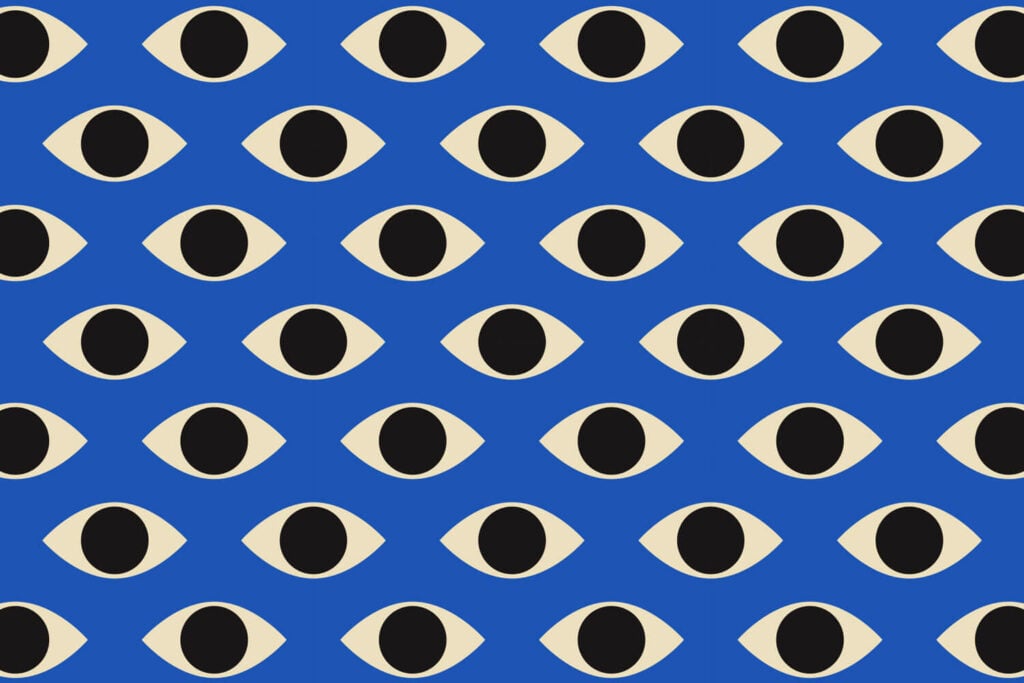While most people often associate patent protection with utility application, a design patent should not be overlooked and can often be the most valuable form of intellectual property a new business or startup can invest in.
If you are an e-commerce business owner, a design patent is undoubtedly one on your most valuable assets as it will allow you to immediately file an intellectual property rights violation notice on platforms such as Amazon, eBay, and Facebook where you can immediately remove infringing products from the storefront.
For those business within the consumer goods, software, electronics, apparel, medical device, sporting goods, etc. industries, a design patent can be a cost-effective and efficient method of protecting your proprietary products at a fraction of the cost of a utility patent.
This guide will walk you through how to patent a design and provide crucial tips that will help you secure your design patent application.
How A Design Patent Works?
You can get design patent protection on an entire article or object or just portion of the article or object by filing a design patent application with the USPTO. A design, according to the USPTO, is a “set of visual ornamental features that are incorporated into or applied to a manufactured object.”
The first step is ensuring your design or invention has not been publicly disclosed for more than one year since the date of filing your design patent application. If it has, you are no longer eligible for patent protections under 35 U.S.C. §102(a).
The second step is to ensure your invention is both novel and non-obvious, meaning your design is different from all previous inventions (i.e., prior art) in its ornamental shape or appearance and those differences are not obvious variations to one skilled in the art.
If your design meets the patent eligibility requirements, it’s time to begin preparing your application and understand what views of your invention you must include. Remember, the drawing figures of your design patent application are the most important aspect of your application and must include the appropriate shading, broken lines, and indicate the “character and contour “of all surfaces of the any three-dimensional object.
Without the proper shading your application may be rejected under 35 U.S.C. §112. Your application should include at least a perspective view, top and bottom view, left and right-side view, and a front and back view. Lastly, you may need a “broken line” statement to disclaim any portion of the views that are not going to be claimed.
What Does a Design Patent Protect?
Design patents protect the non-functional new, original, and ornamental shape or configuration of an object, the ornamentation on the surface of an object, or decorative aspects of the object. The novelty of your invention is based on the ornamental design and cannot be dictated by the functionality performed by the object.
Design Patent vs. Utility Patent
As an inventor, the first question you must ask yourself is “what if you point of novelty?” Is your point of novelty in the functionality of the invention or the non-functional ornamental design of the invention?
A design patent protects the visual non-functional characteristic of your object or design. Utility patents protect the function or way that an article is used or how it operates. However, both design and utility patent protection may be obtained for certain inventions where the novelty lies in both the ornamental design and functionality of the object.
How Can You Protect your Software UI with a Design Patent?
Design patents can be used to protect your software. Patent protection of Graphical User Interfaces (GUI), loading screen changes, and other ornamental elements can result in highly valuable assets for software companies looking to protect the ornamental aspects of their software platforms. Your GUI may be patentable and may meet the “article of manufacture” requirement if your GUI’s two-dimensional image is shown on a computer screen, tablet, or mobile device.
Your GUI design patent application may include multiple embodiments as long as those embodiments relate to a single GUI design. The application should include at least one area in dashed or broken lines, and the outer boundary of the device in broken lines. A broken line statement is essential in defining what portions of the GUI are claimed.
How Long Does It Take to Get a Design Patent?
We all hear myths that it takes many years to secure a patent in the United States. While there may be some truth to these rumors, the pendency times (i.e., the time between filing an application and official action on your application) is published at the USPTO. Currently, the pendency time for a design patent application is 16.4 months[1]. This means that you should expect to wait 16.4 months after your applications filed to hear something substantive back from the USPTO Examiner. However, for a nominal fee of $400-1000 you can file a “Request for Expedited Examination” and take advantage of the USPTO’s “Rocket Docket.”
How Can I speed Up the Design Patent Process?
While the average pendency time of a design patent application is approximately 16.4 months, there are options available to expedite your design application and bypass the over 77,000 applications waiting to be examined. The USPTO does offer an expedited design filing option that must be requested upon filing your application.
Specifically, the USPTO states “from the date of filing, any applicants may request to expedited examination of their design patent application by filing a “Request for Expedited Examination of a Design Patent” form (PTO/SB/27) along with the appropriate fee ($400-$800 depending on filing status), and compliant Information Disclosure Form at the time your design patent application is submitted to the USPTO.
Though it’s one of most overlooked requests offered by the USPTO, its highly recommended for businesses looking to accelerate their design patent prosecution time and receive a first action in approximately 2.9 months.
How Much Does It Cost to Patent a Design?
There are several advantages to a design patent application over a utility application including cost, prosecution time, and allowance rates. The cost of patenting a design depends on for what filing status your business qualifies. The basic filing fee structure is as follows:
- Micro entity: $190
- Small entity: $380
- Large entity: $760
Since these applications can be complex for those unfamiliar with the patent process, you may engage a patent attorney to help you with the requirements. Patent attorneys and agents can charge anywhere from $1,500 to $3,500 just to prepare and file your application (without drawing or USPTO filing fees). However, working with an experienced patent attorney will ensure little to no errors that could cause delays when submitting applications at later stages of the process, or worse, having those applications rejected.
At the Rapacke Law Group our design patents are $2850 which includes all attorney, draftsman, and USPTO filing fee. We even back it with the RLG Guarantee, meaning If you receive an Office Action or further communication is required with the USPTO we handle it for free. If your design does not receive a Notice of Allowance, we will provide you a full refund.
Will I Receive a Notice of Allowance?
While every design application is unique and presents its own challenge, you can be assured, if properly filed, your design patent application will be evaluated by at least one of the 288 design patent examiners at the USPTO and has an over 82% chance of receiving a Notice of Allowance.
Design Patent Examples
To ensure that your design idea is original, you may want to compare it to at least one existing design patent. It will also help you learn about the information that needs to be included to ensure a successful application.
Some well-known design patent examples are:
Nike and Adidas, two leaders in the athletic footwear industry; Apple and Samsung, two of the world’s largest smartphone manufacturers; and Porsche, Ford, and General Motors, are among the top corporations in terms of patent applications in 2022.
Can You Patent a Logo Design?
If you wish to protect your logo design, you should consider trademarking or service marking instead. Logos cannot be patented since patents only apply to inventions, processes, and ornamental designs applied to an object. A logo functions as a brand identifier and not an article of manufacture. Remember, trademark protection is afforded to any word, phrase, symbol, design, or combination that consumers associate with your brand’s products or services.
How Do I know if Someone is Infringing My Design?
Determining if someone is infringing your design patent is a complicated legal analysis that should only be conducted by an experienced patent attorney. Similar to utility patent infringement, which occurs when an infringing party makes, sells, offers for sale, sells, or imports into the United State an infringing product under 35 U.S.C. § 289, design paten occurs when a paten design is violated.
While an infringement analysis is a complicated legal endeavor, there are a few preliminary steps you can take to make that legal analysis easier. First, I would recommend purchasing the allegedly infringing product for inspection. Once in your custody, you can do a basic “ordinary observer test “by comparing the similarities and differences between your product and the allegedly infringing product side-by-side.
Remember, to have a claim for design patent infringement it must be shown that, given a side-by-side comparison of two designs, an ordinary observer would not be able to tell which design belongs to the patented design and which is one is the infringing product. The term “ordinary observer” refers to a person familiar with the prior art and can be either a consumer or an industrial buyer.
If the two articles side-by-side are identical, I would highly recommend contacting a patent litigation firm experienced in design patent matters.
Speak With an Experienced Design Patent Attorney
There are many benefits to consulting with an attorney experienced in design patents. First, they will be able to help you determine if your design is patent eligible and guide you through the prosecution process. If your invention is not patent eligible, they may be able to help you find another form of intellectual property protection that is better fit or recommend another valuable strategy for protecting your proprietary products. Additionally, an attorney can help you decide if a design patent is right for you and guide you through the process of filing for one once that determination has been made.
Find out if you require a design patent or a different kind of IP protection by taking The Rapacke Law Group’s Intelligent IP quiz.
If you have questions about whether or not a design patent will cover your concept, or if you need guidance choosing between a utility patent and a design patent, or applying for both, contact us at The Rapacke Law Group for a free consultation today!
[1] https://www.uspto.gov/dashboard/patents/design.html




